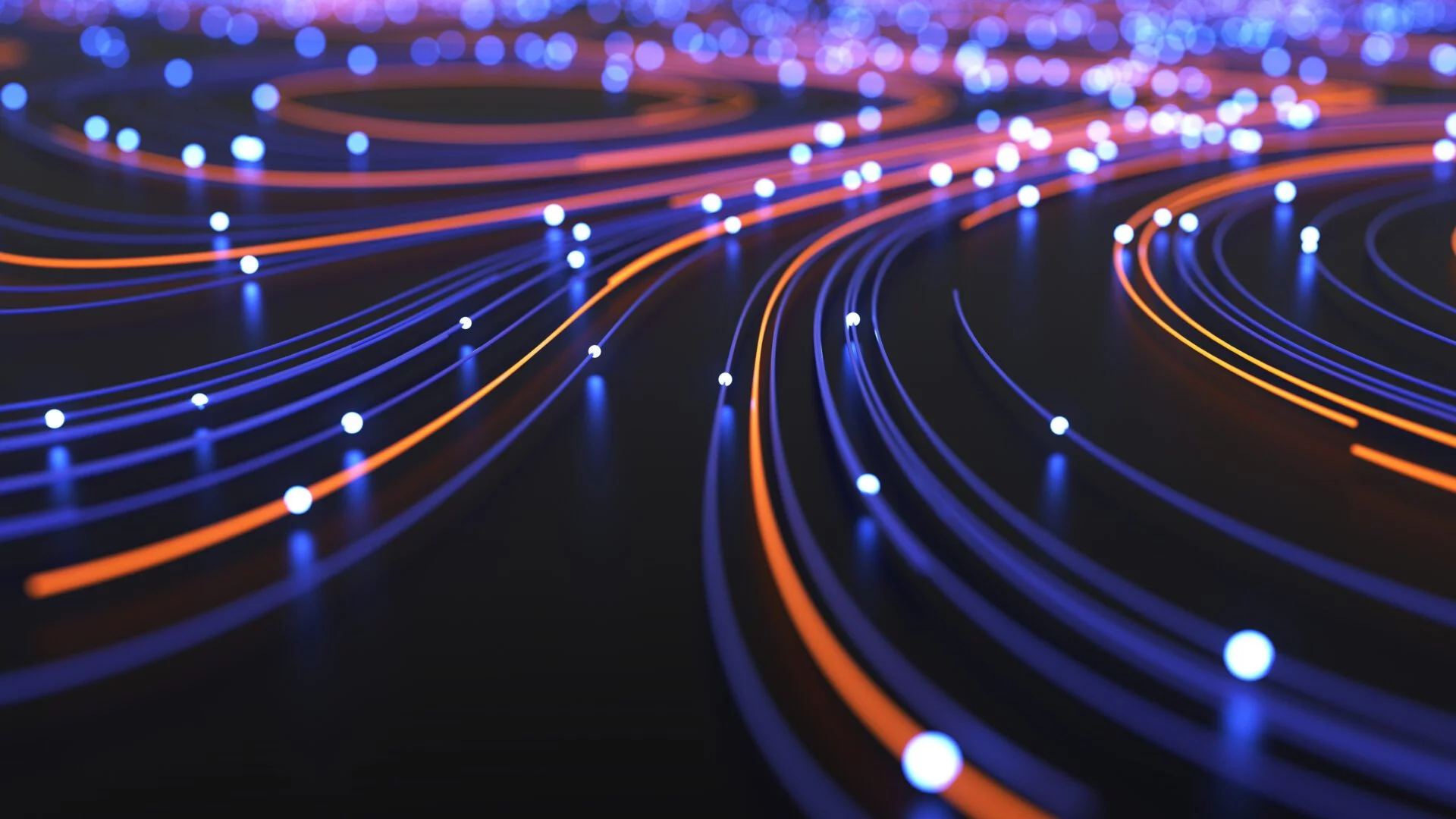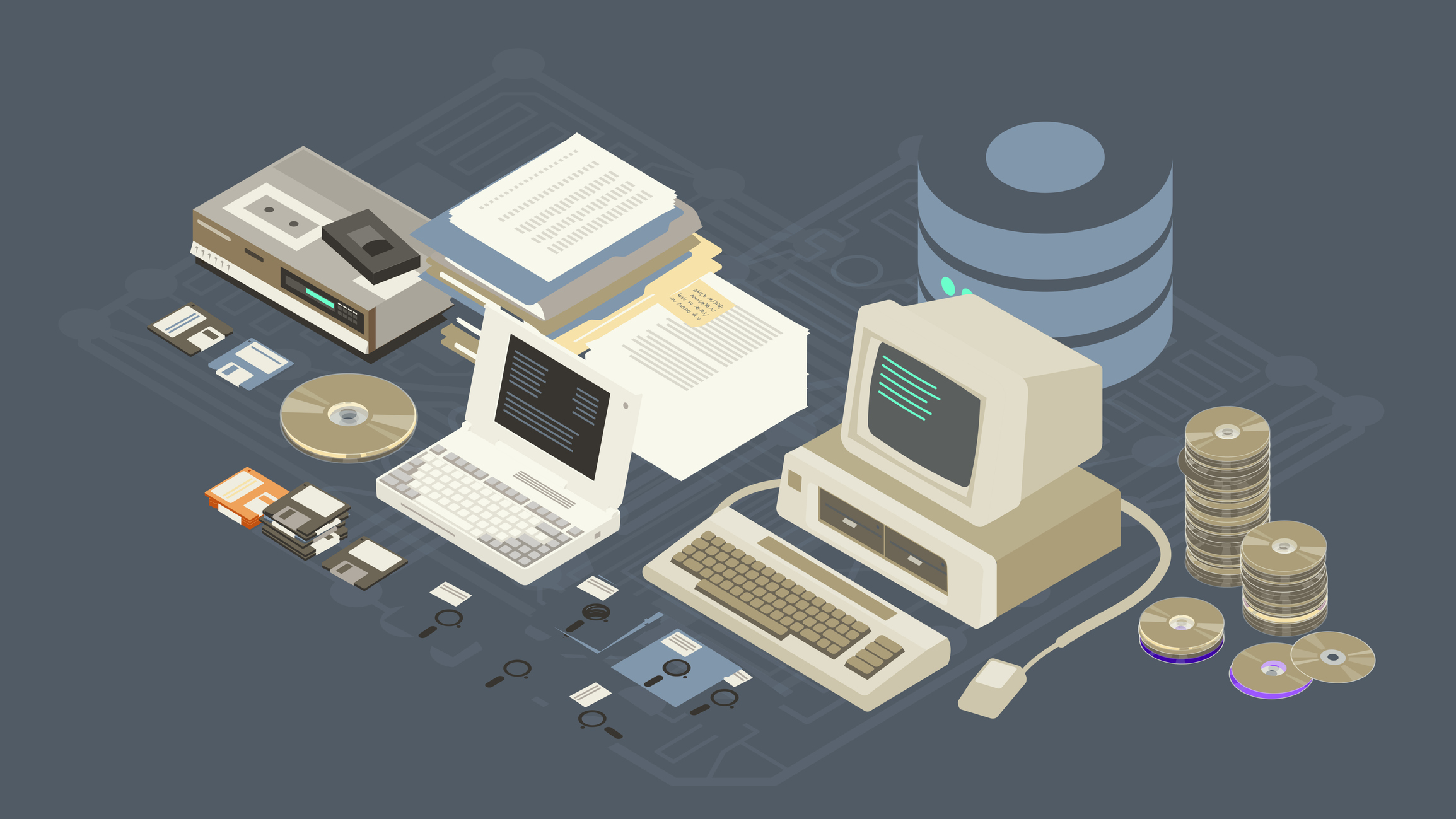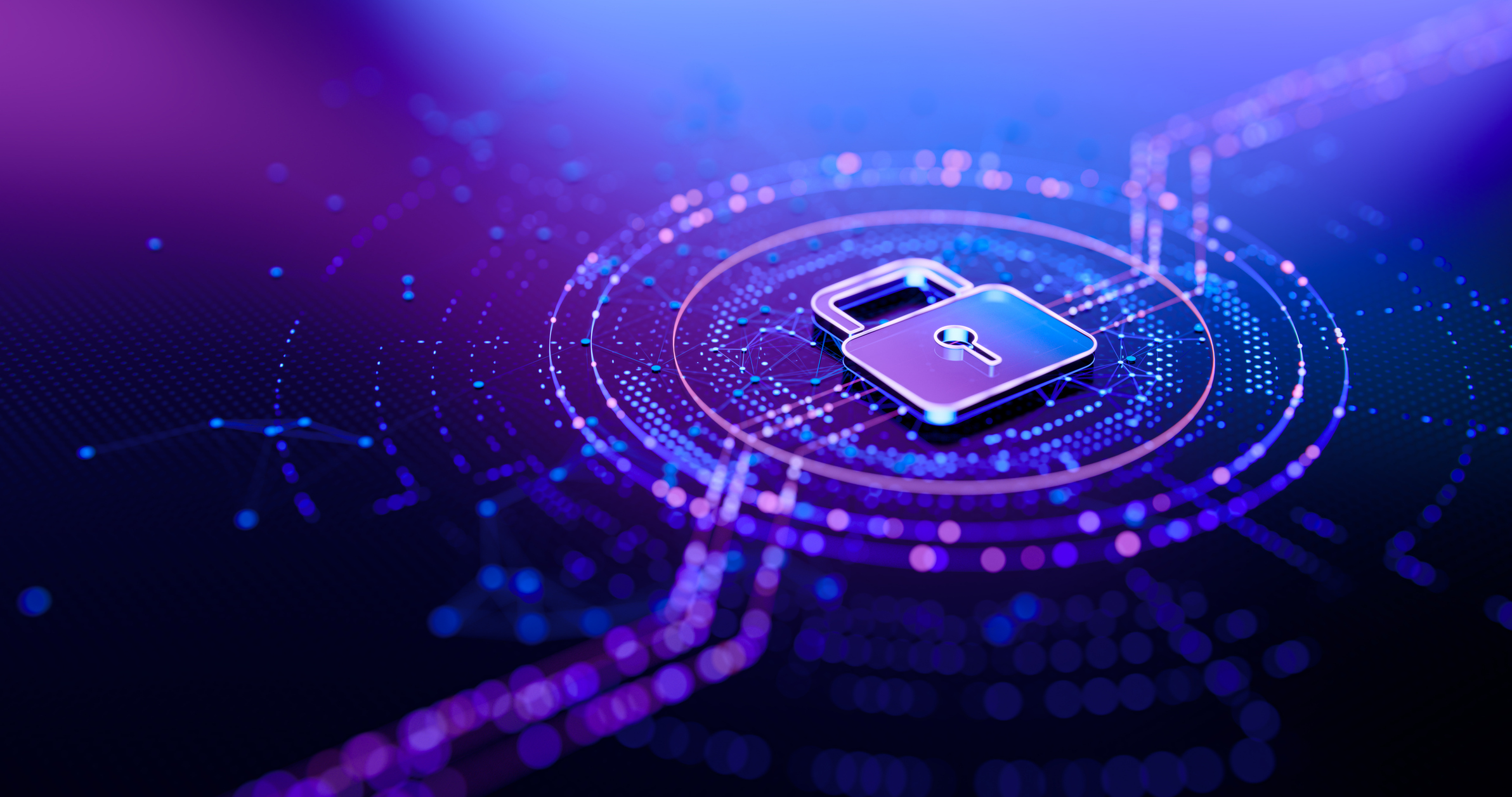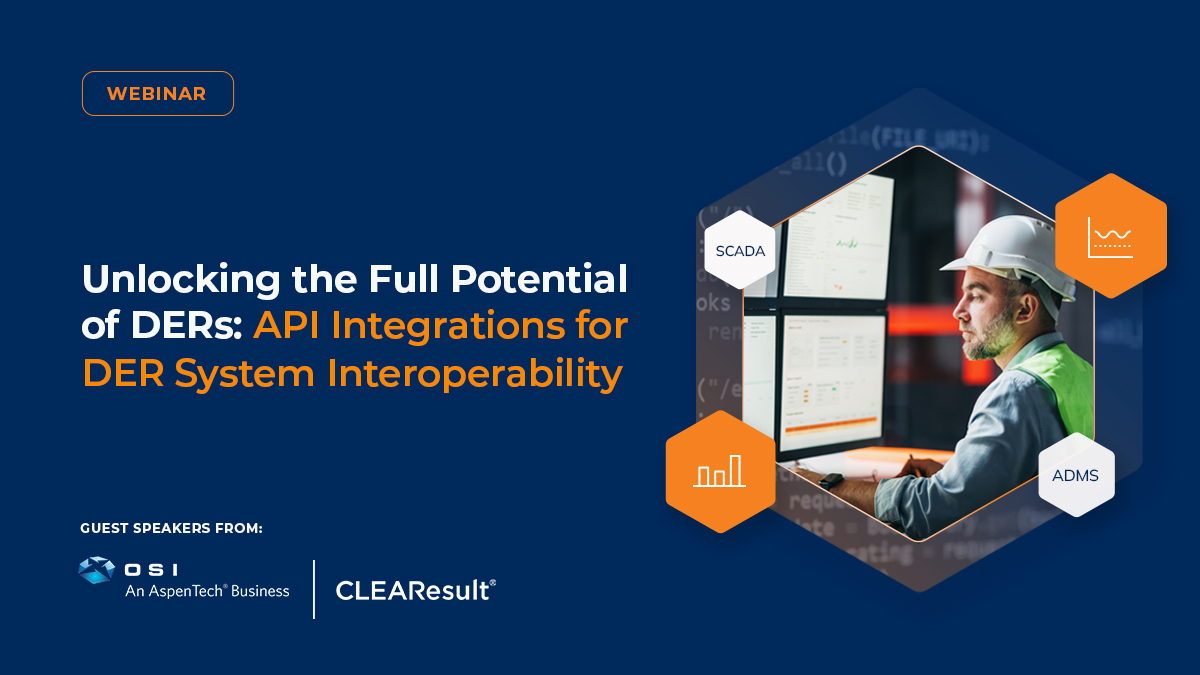Whether you’re developing new tech or crafting something physical when building anything, nothing beats real-world, hands-on experience. At Virtual Peaker, working with original equipment manufacturers (OEMs) to get their devices into demand flexibility programs is imperative to our business. With dozens of OEM integrations under our belt, including several OpenADR integrations, we realized both OEMs and utilities needed a better way to get devices in programs and then manage & control them after they’re enrolled. We developed the Gravity Connect API® to eliminate barriers to the distributed energy resource (DER) initiatives that utilities need to decarbonize, lower energy spending, and enhance grid resiliency.
Why Finding the Right API Matters
If you’re reading this, you know that no one piece of hardware or software alone will solve the climate crisis. Just like the global energy needs will be met with a diverse portfolio of options, finding continued solutions to curb harmful carbon emissions will require a mixture of existing and new technologies working together in real time. APIs enable that collaboration by unlocking real-time coordination of systems from the grid level down to residential devices behind the meter.
Like any technology, APIs are not all created the same. Even by the most affordable measures, API development is costly. Those costs cover myriad expenses, while simultaneously slowing down the deployment of your program depending on the duration of the development and marketing. Among many reasons that we developed this API, Gravity Connect is designed to address these challenges to minimize cost and expedite program deployment.
Your API connection from your distributed energy resource management system (DERMS) to demand response (DR) devices impacts everything from how you get devices into your system to commands you can send to how quickly you get event performance data back. Currently, OpenADR is the most widely adopted DERMS API standard and it has provided tremendous benefits to DERMS programs by creating a common standard for utilities and OEMs to call events and create event reports. But, as APIs’ go, it uses outdated technology and lacks the focus on DERMS needed to allow demand response programs to evolve and grow in the way they need to in order to solve the climate crisis. Let’s look at how the two API types compare.
What Gravity Connect Does That OpenADR Doesn’t
Gravity Connect gives OEMs and utilities multiple ways to enroll devices for both direct installation and bring-your-own-device (BYOD) programs. Once enrolled, Gravity Connect API allows for devices to use either individual or group commands giving utilities the flexibility they need to maximize the impact of their demand response events. And, Gravity uses webhooks that trigger immediately when data is available improving the turnaround time on event reporting including device participation and performance. There are many reasons why quicker reporting speeds improve operational efficiencies, not least of which is access to the real-time data you need to plan demand events or engage in energy arbitrage.
Additionally, Gravity Connect was built by developers for developers with a focus on improved developer experience. It follows best practices for modern API development including using JSON, OAuth 2.0, and Webhooks. Most importantly, Gravity Connect, because it is laser-focused on the demand response use case, allows for a standard implementation as opposed to OpenADR, which tries to account for a wide range of use cases resulting in bespoke code for each new integration, which can slow down operations.
What OpenADR Got Right
The OpenADR standard moved the industry in the right direction. The climate crisis will take coordination across the industry, including between competitors, and OpenADR proved we need open API standards to facilitate our transition to a sustainable future. It provided a standardized way for demand response integrations to both call events and produce reports. And, most importantly, it rallied the industry around the need for open standards. That is why we’ve developed Gravity Connect with OpenAPI specifications, which avoids vendor lock-in in an effort to drive value at scale for utilities with any DERMS platform.
Gravity Connect v. OpenADR Comparison
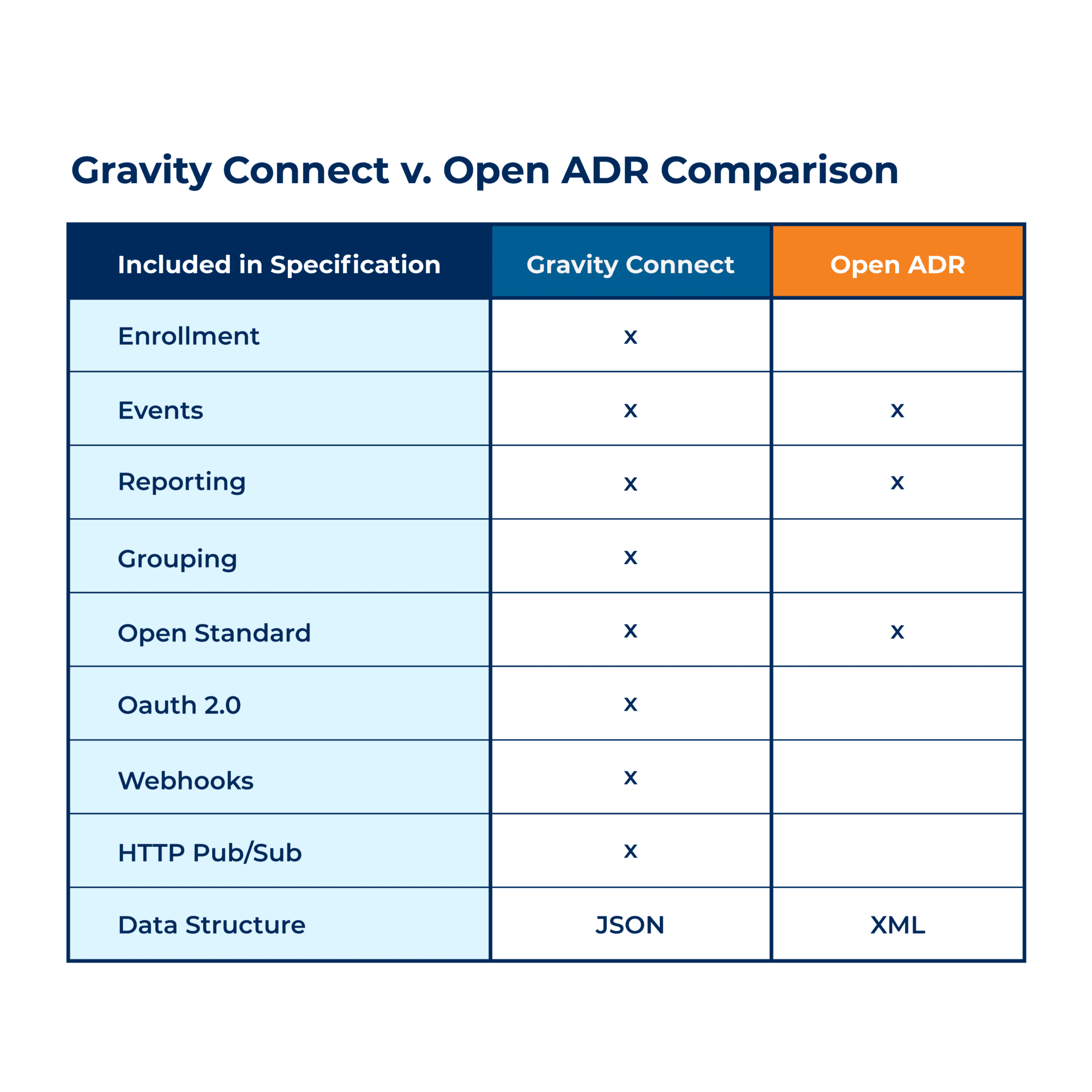
Conclusion: Gravity Connect v. OpenADR
The Inflation Reduction Act will make planet-saving technology more widely available and affordable, creating significant opportunities for DERMS programs to increase their impact. Households will move beyond merely having a smart thermostat in their home to upgrading their water heaters, adopting electric vehicles (and their required charger), installing solar panels, enhanced battery storage, and more. Gravity Connect is the API standard purpose-built for a rapidly evolving landscape. It accounts for the full range of activities needed to run a DERMS program from enrollment through detailed event reporting and allows for faster integrations between smart technology and DERMS programs. Simply put, Gravity Connect does what OpenADR does and more, all within modern API standards.

